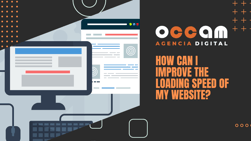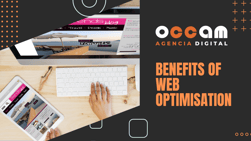Index Content
how many times have you confused them? 1, 10, None...?
In any case, it's a good idea to refresh our memory on these fashionable concepts, especially now that the coronavirus pandemic has increased the time of use of web and mobile Apps all over the world. Both usability and web accessibility are two elements present in the digital universe, but let's see what each one consists of.
ready? Don't confuse them anymore.
What differentiates usability from web accessibility
It's amazing how many times we have tended to think that usability and web accessibility are exactly the same, or worse, how many times we have confused them.
To begin with, usability analyses the behaviour of users when they perform a task in the web environment, while accessibility refers to universal access to a page. Usability is that tool that makes it possible for users to achieve their goals with minimum effort, for example: visiting a web page and navigating it without complications.
Some fundamental guidelines in usability are:
- Speed: It is of vital importance, because if it takes too long to load, visitors will abandon the page. According to some statistics, "when a website takes more than 20 seconds to load, 80% of its visitors end up abandoning the page before viewing it".
- Appearance: The cleaner and simpler it is, the easier it will be for users to navigate the site and find what they are looking for.
- The information: descriptions, titles... Everything contributes to finding what they are looking for.
- The user interface: it does not have to be a problem for the user; on the contrary, it must be intuitive.
- Readability. It will allow them to visit the website without any problem, as well as to enjoy the contents.
Web accessibility, however, has a universal character and takes into account that the circumstances of each user are different, from the language they speak to their visual capabilities.
Hence, accessibility is very much taken into account in governmental pages, where the aim is to support all citizens. The more it is made easier to understand, the better.
Characteristics of accessible experiences
Imagine that you need to do a banking operation through the web, but you don't understand what this means, you don't know how to do it. The bank manager tells you that you will have to ask someone else for help, but you don't have anyone else. Perhaps, for younger people, the immediate answer to these doubts can be found on the internet, but there are many other people, especially older people, who do not have the necessary knowledge to solve it .It has a lot to do with web accessibility and user experience.
That is why we want to talk about how to design accessible experiences:
- First of all, you should know that accessibility seeks to make web pages usable by the greatest number of people, regardless of their abilities or knowledge. It has a lot to do with what Tim Berners-Lee said: "The power of the web is in its universality".
- Accessibility does not only have to do with the code, with the technical part. On thecontrary, it has to be considered from the design part. It must be an incorporated part of the project and not something extra. What is really expensive is to have a web that is not accessible or not accessible at all .
- It increases the usability of the website, i.e. to all users. With accessibility, websites comply with web standards, adapt to mobile devices, attract more visitors, improve accessibility for the elderly and SEO, support the international market and reduce maintenance costs .
- Learning how to have an accessible website has its costs, like learning any technology, but once you have the knowledge, it costs much less to maintain an accessible website than one that is not. In addition, we will comply with the law, as it is mandatory in many countries (Spain and Portugal, among others) .
It's all connected: user experience requires accessibility, usability and sustainability.
Guidelines to consider for your website
Respect the following guidelines and reach more visitors within the network:
- Images: We advise you to use the alt attribute to describe the function of each visual element.
- Links: It is important to use content that makes sense when read out of context and to place the link on it.
- Multimedia: It is advisable to subtitle, describe and transcribe the videos you use on your website.
- Organise the pages, using headings and solid structures. You can layout them with CSS.
- Tables make it easier to read line by line and summarise the contents.
However, there are many other elements that influence the improvement of web usability and accessibility. Do you want to know them? Do you already know what web usability and accessibility are? Do you comply with the regulations? Do you need help?




